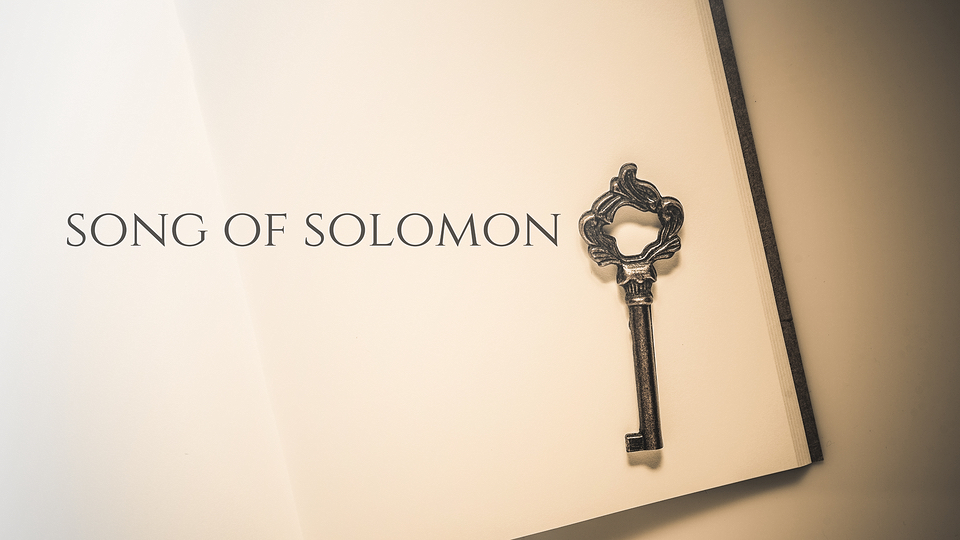Preaching Pointers from Song of Solomon
Author: Solomon
Audience: The Jewish Nation
Date of Writing: ca. 935 B.C.
The Song of Solomon is an unusual but beautiful Old Testament work filled with typology. No book in the Bible presents symbolism more liberally or effectively than The Song of Solomon.
The title of the book means that this is the song above all songs. King Solomon wrote over one thousand songs (I Kings 4:32); however, this one was above all the rest! The Song of Solomon requires reflection and serious study since it uses a sensitive subject – human physical love – to describe a wonderful spiritual reality – Christ’s love for the church.
So, the theme of the book is a perfect expression of romantic love, and a description of the relationship between Christ and the church.
The Jews saw this love story as an illustration of God’s love for His people. Christians have viewed the book in several ways:
- Literal Meaning: A precious love story between Solomon and his beloved.
- Historical Meaning: A picture of the relationship between Jehovah God and Israel.
- Typical Meaning: A picture of the relationship between Christ and the church.
- Practical Meaning: A picture of faithful love and deepening communion.
G. Campbell Morgan offers a balanced view. ”The song should be treated first as a simple and yet sublime song of human affection. When it is thus understood, reverently the thoughts may be lifted into higher values of setting forth the joys of communion between the spirit of man and the Spirit of God, and ultimately between the church and Christ. Therefore, I can sing the Song of Solomon as setting forth the relationship between Christ and His bride.”
This Song is a poetical rendition of an actual event. We are given practical principles for the marital relationship that are relevant in every age. Also, as marriage in the scripture pictures the relationship of Christ and the Church, so The Song of Songs paints this same picture.
We must understand that this book is part of the Old Testament poetry and wisdom literature. It is one of three books attributed to Solomon. He also wrote Proverbs and Ecclesiastes.
In order to understand this book, you must see the story as a whole. In Northern Israel, Solomon is sharecropping on of his farms with a family. On one occasion, he goes to the country, puts on the garments of a shepherd, and visits the property. Then he meets a country girl keeping her vineyard. He falls in love with her and she with him. She is not aware that he is King. He proposes to her and then returns to Jerusalem. Later he returns in the glory of his kingship, and the surprised girl finds that he has come to take her to Jerusalem for the wedding feast. After marriage, they rejoice in their honeymoon. Later, their love falters and grows cold, but afterward it is recovered. The book reveals the ideal of love in marriage.
Some have found it difficult to accept the fact that Solomon could possibly be the man in the poem, especially in view of the fact that he had many wives and concubines. The question is raised, “Why should he write a Song about the virtue of marital faithfulness?” You need only to look to the book of Ecclesiastes to find the answer. Written in the latter days of his life, Solomon confesses that wealth, wine, and moral wickedness are “vanity of vanities.” The Song of Solomon stands in stark contrast to his Vanity of Vanities. Ecclesiastes pictures life with shattered and sordid relationships. This kind of life is vanity – foolish, but, the Song of Solomon pictures life in the joy of good relationships.
Many believe that this was Solomon’s young and first love. Perhaps she died after a brief marriage. We don’t know. She saw herself as the perfect match for him, and him as the perfect match for herself. It could be that losing her is what drove Solomon to the vanities of life.
Solomon uses rich descriptions which set forth the beauty that God, the Creator, bestowed upon the planet. God gave us this world and life to enjoy. The remarkable usage of nature to picture the relationship between man and wife is beautiful and brilliant. Solomon’s use of nature to describe the sexual relationship of a man and his wife stands in contrast to the degrading vulgar descriptions in our day.
God gave the Song to celebrate the joy and bliss of true marital love. He also gave it to picture the bliss of the final union of Christ and His bride.
As we study, we view the King as Christ and ourselves as the bride in order to draw spiritual lessons.
OUTLINE
Introduction (1:1)
- THE BASIS (1:2-8)
- THE BLOSSOMING (1:9-3:5)
- THE BLESSING (3:6-5:2)
- THE BURDEN (5:2-7:10)
- THE BEAUTY (7:11-8:7)
- THE BATTLE(8:8-14)
Dr. Tom Tucker is the Senior Pastor of Sisk Memorial Baptist Church in Fort Mill, SC. He is the past President of the South Carolina Baptist Convention and serves on the Executive Committee of the Southern Baptist Convention.



